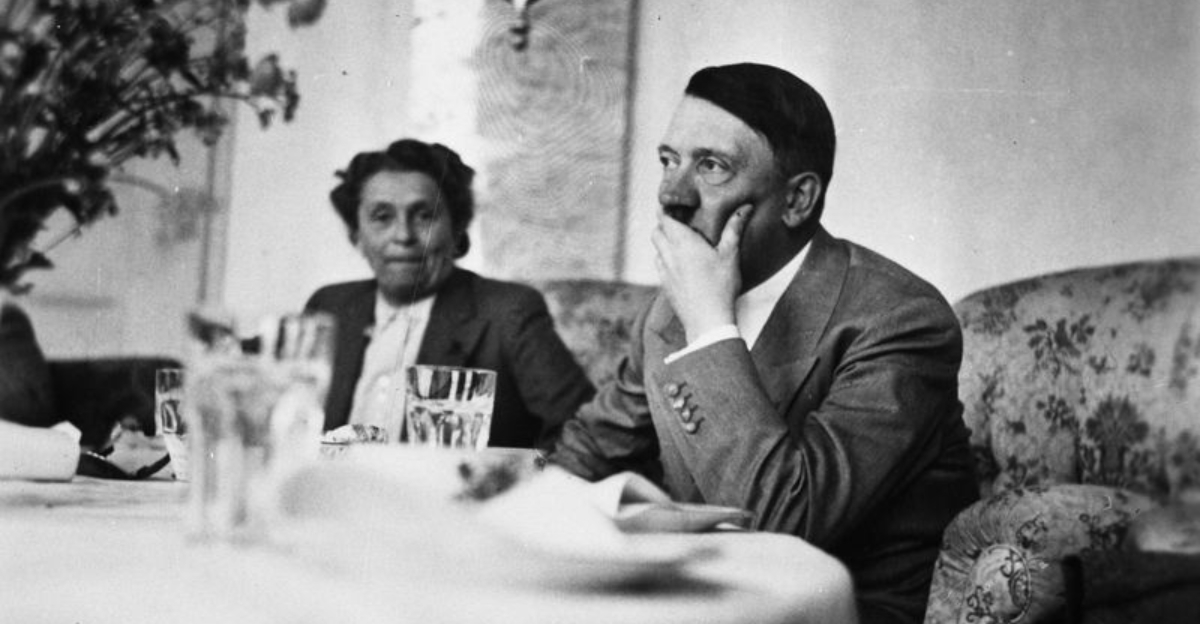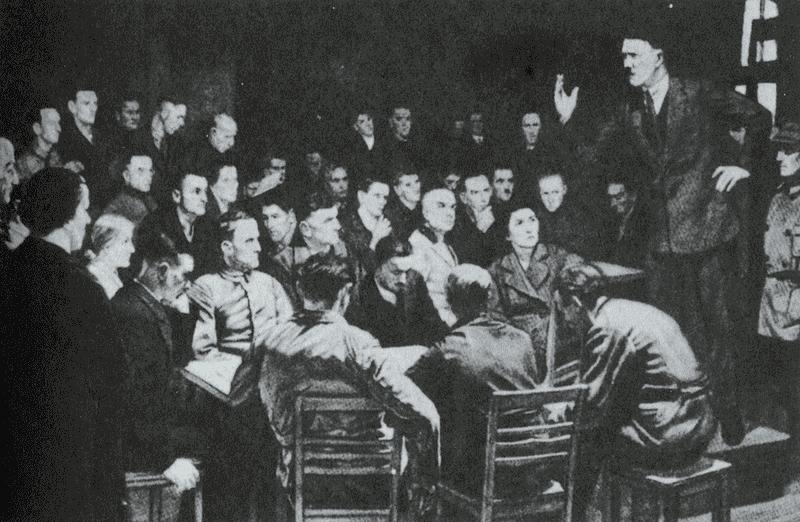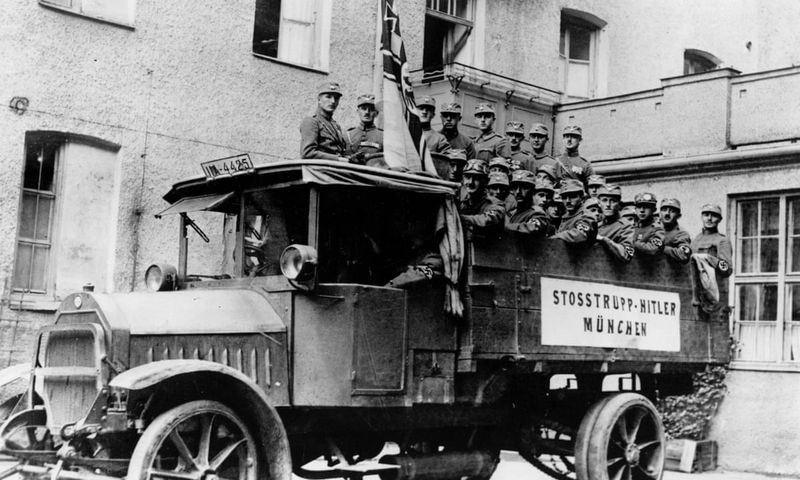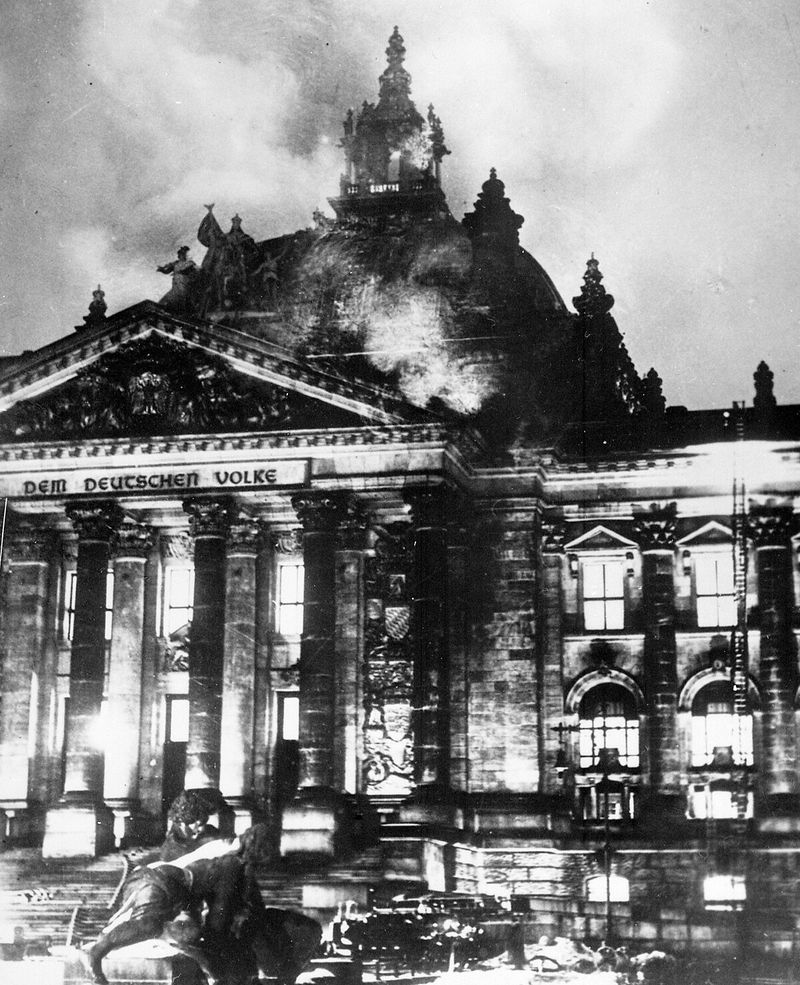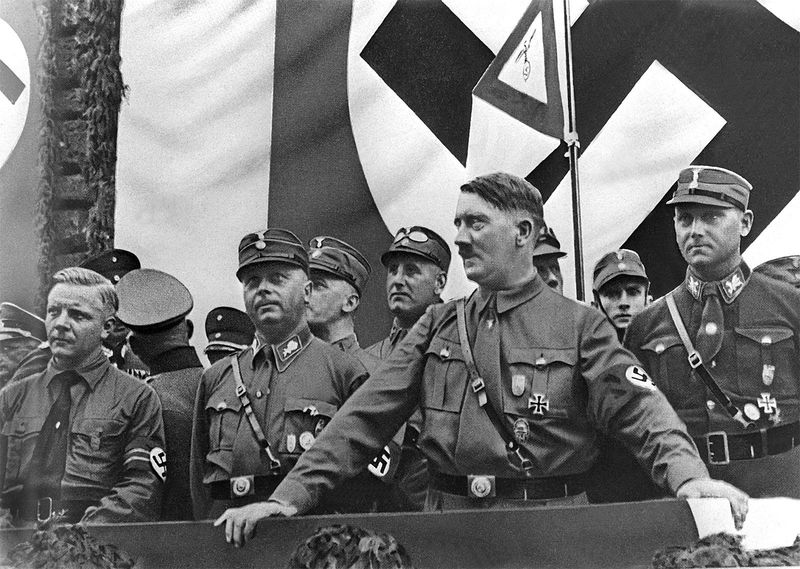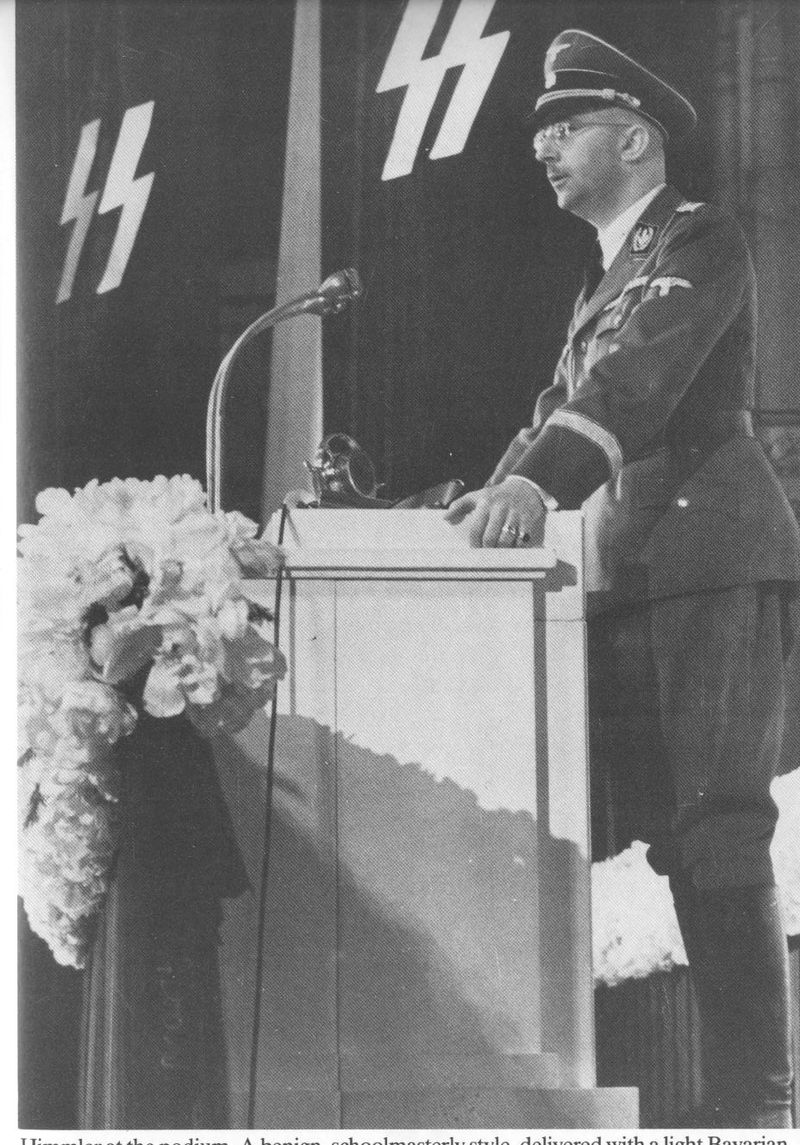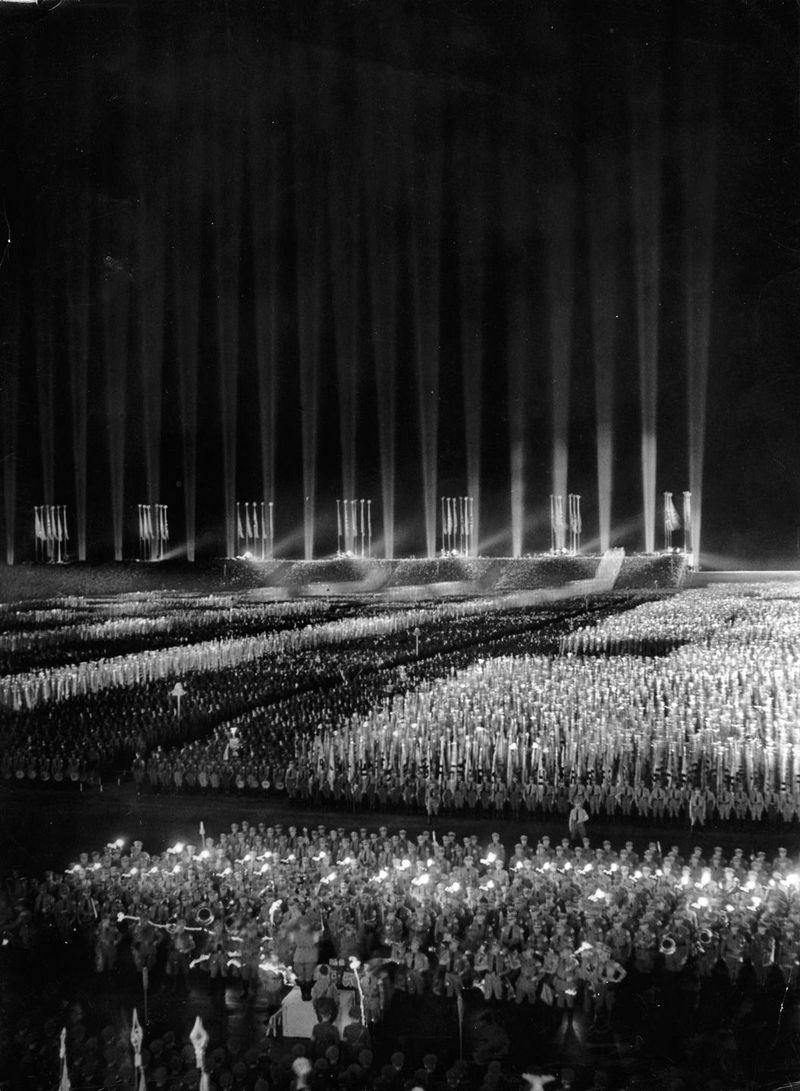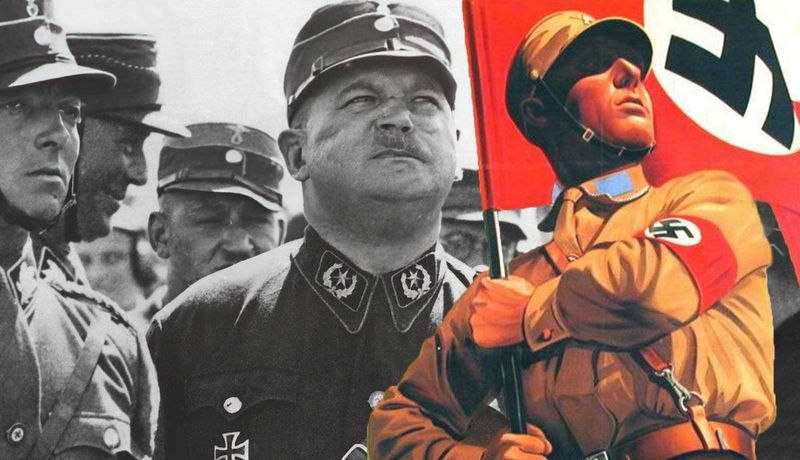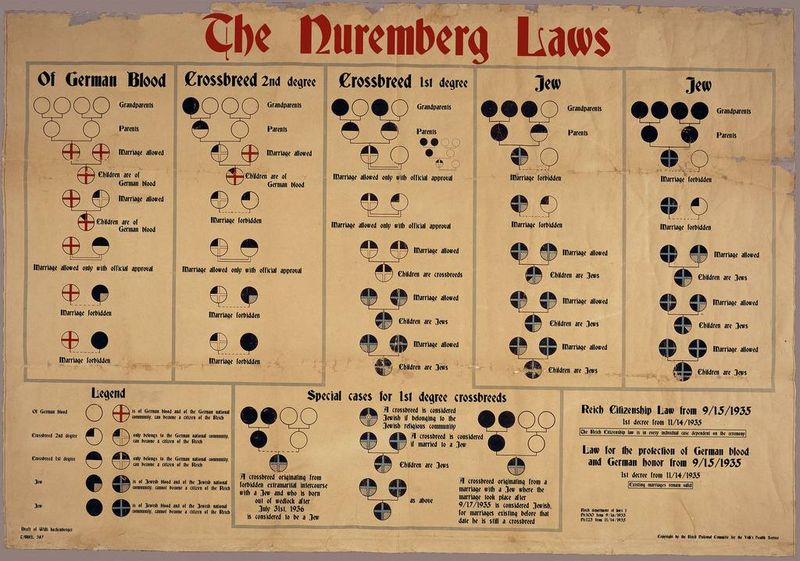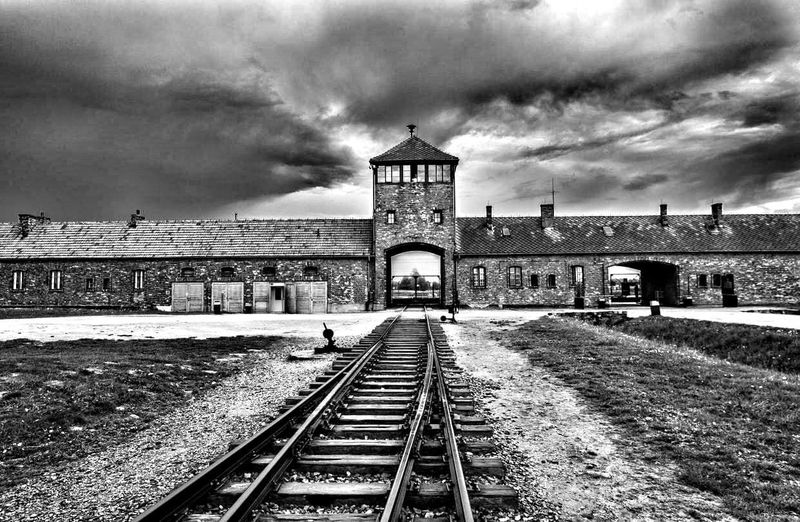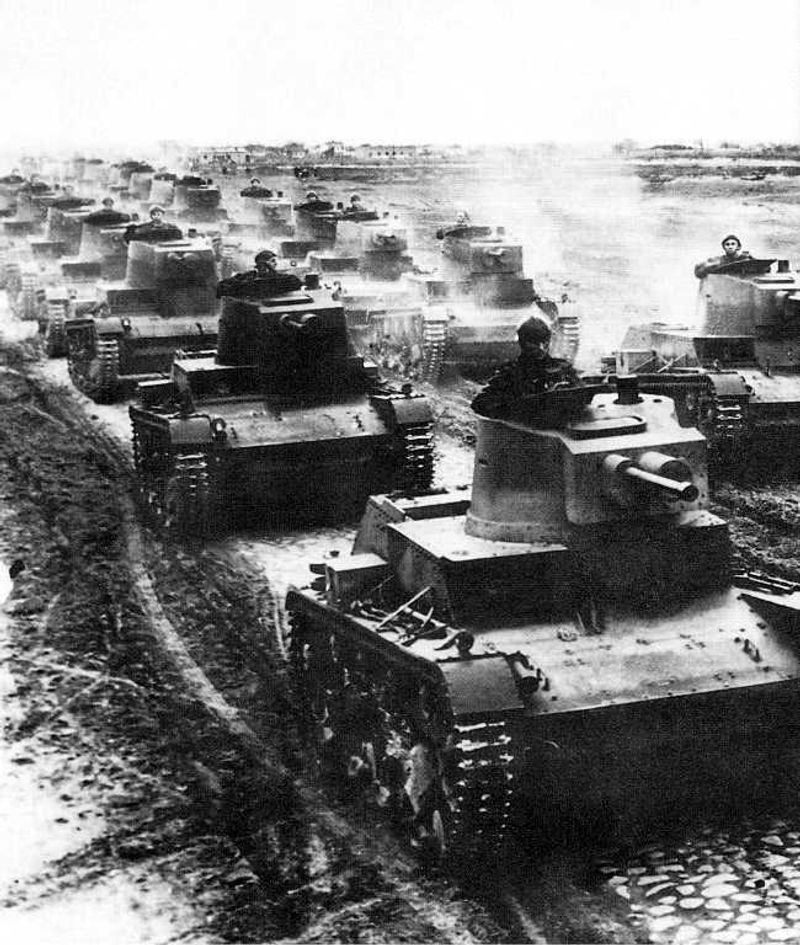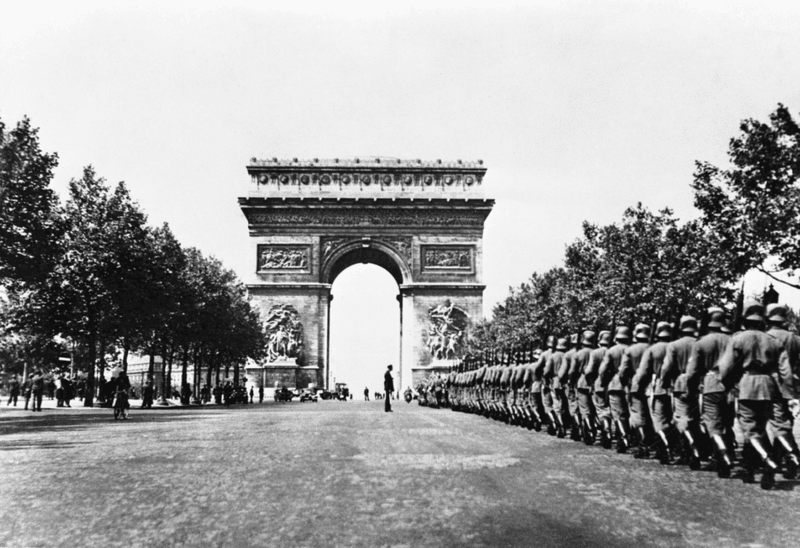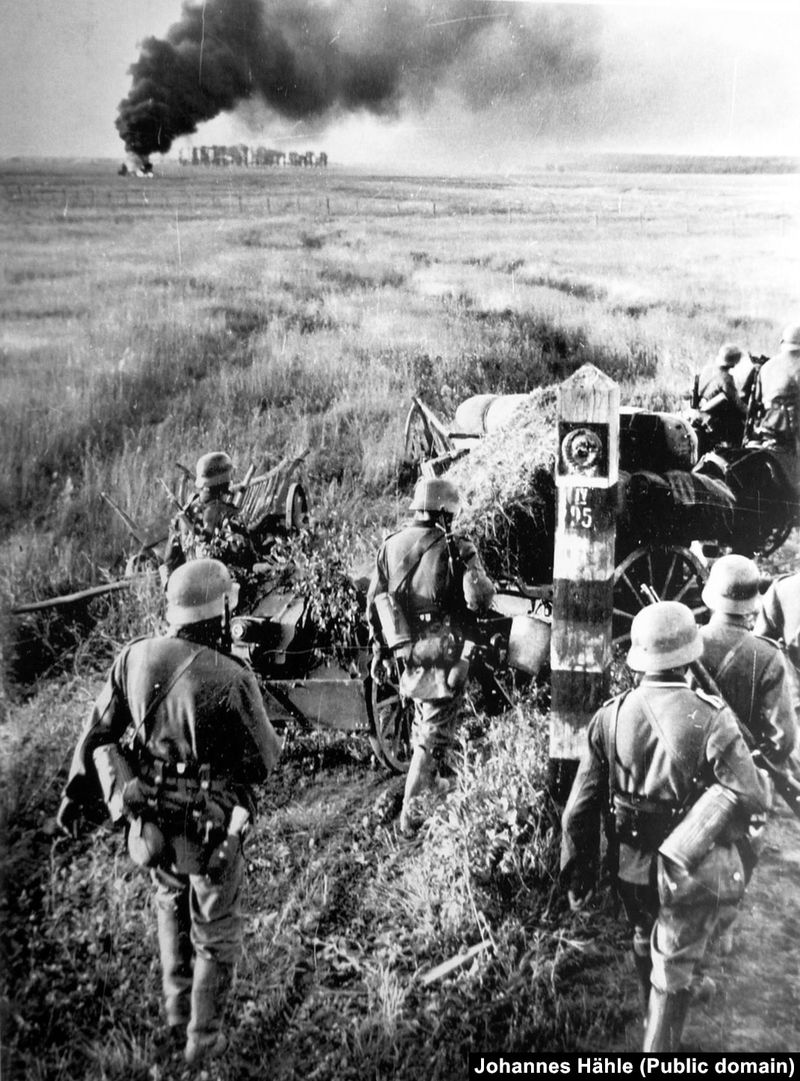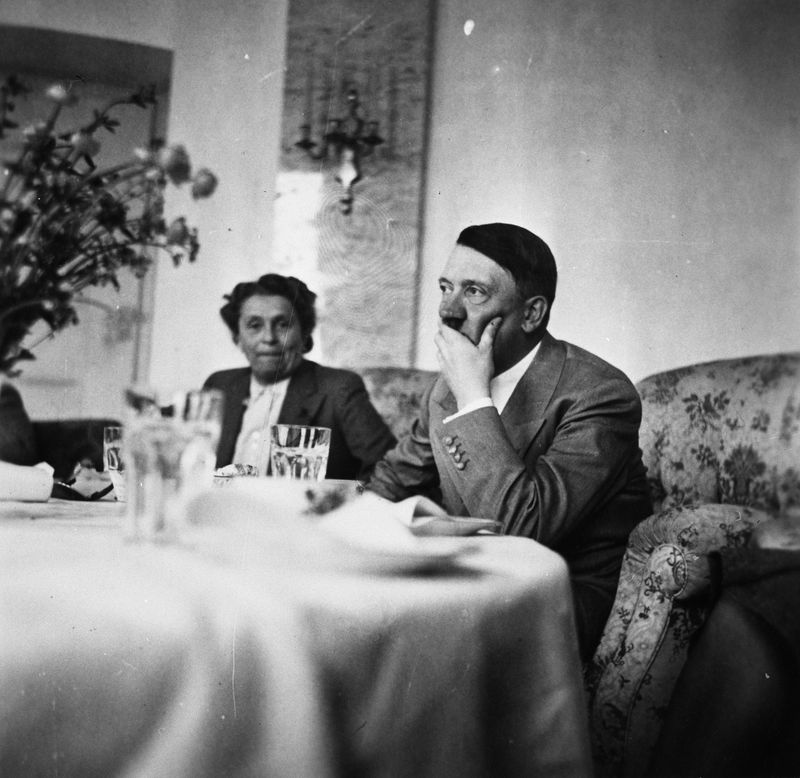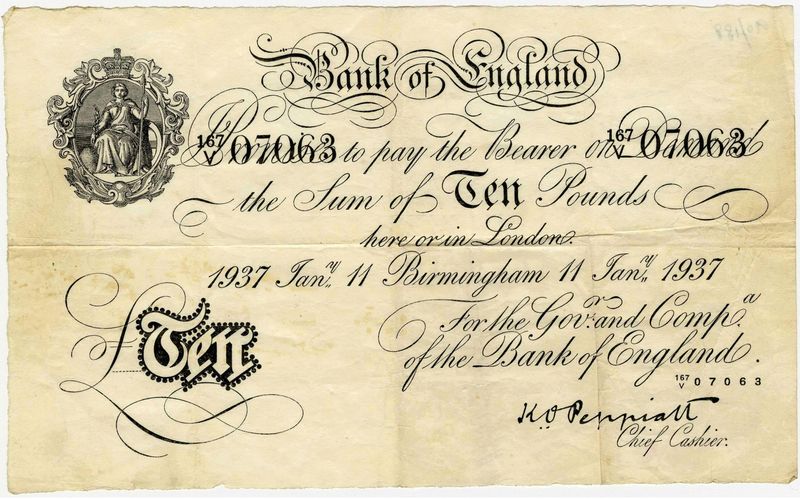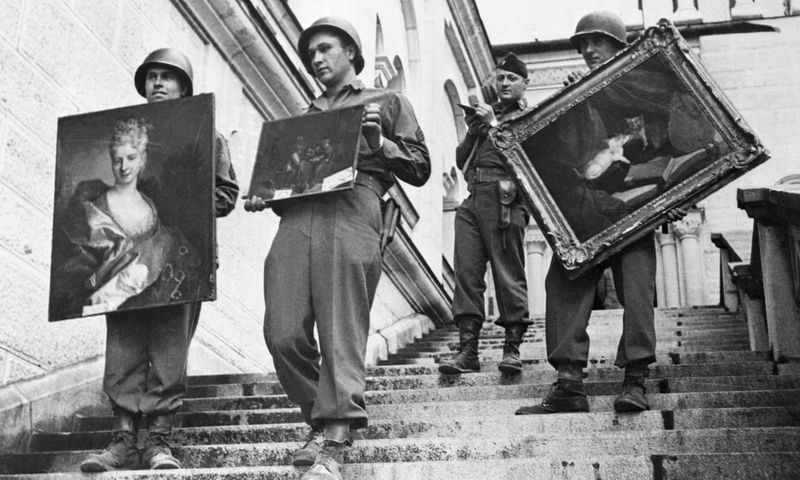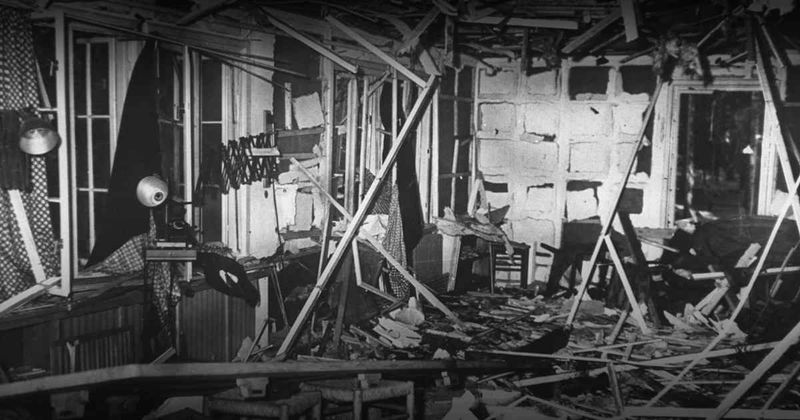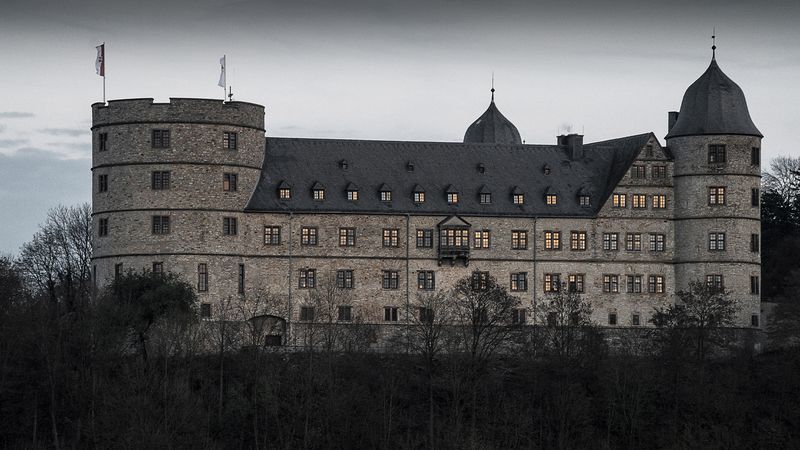The Third Reich stands as one of history’s darkest chapters. From 1933 to 1945, Adolf Hitler’s Nazi regime brought terror to Europe and unleashed the horrors of the Holocaust. What began as a small political movement transformed into a devastating force that caused World War II and the deaths of millions. Let’s explore how this nightmare unfolded and finally collapsed.
1. 1919: Joins the obscure German Workers’ Party (later Nazi Party)
A jobless army veteran wandered into a small beer hall meeting in Munich. Adolf Hitler, just 30 years old, found his calling that night among the twenty-five members of the German Workers’ Party. Germany was in chaos after losing World War I. Many Germans felt humiliated by the Treaty of Versailles, which forced them to pay huge penalties. Hitler’s fiery speeches about German pride and blaming Jews for their problems attracted followers. The tiny party soon renamed itself the National Socialist German Workers’ Party—Nazi for short. Hitler designed their red flag with a black swastika, a symbol that would soon strike fear worldwide.
2. 1923: Leads failed Beer Hall Putsch, writes Mein Kampf in prison
Munich’s Bürgerbräukeller beer hall erupted in chaos on November 8, 1923. Hitler and 600 storm troopers burst in, firing a pistol at the ceiling and declaring a revolution against the German government. The next morning, their march through Munich streets ended in disaster. Police opened fire, killing 16 Nazis. Hitler fled but was captured two days later. His trial became a publicity platform where he gained national attention. Sentenced to five years in Landsberg Prison, he served only nine months. During this time, he dictated his hateful manifesto, Mein Kampf (My Struggle), outlining his antisemitic views and plans for German expansion.
3. 1933: Appointed Chancellor, then seizes absolute power after the Reichstag fire
January 30, 1933 marked Germany’s fatal turning point. President Hindenburg reluctantly appointed Hitler as Chancellor, thinking other cabinet members could control him. Conservative leaders believed they could use Hitler’s popularity while limiting his power. They were catastrophically wrong. Exactly four weeks later, the Reichstag parliament building mysteriously caught fire. Hitler immediately blamed Communist terrorists, though many historians suspect the Nazis set the fire themselves. Using this emergency, Hitler convinced Hindenburg to sign the Reichstag Fire Decree, suspending civil liberties. Within weeks, he pushed through the Enabling Act, giving him dictatorial powers. Democracy in Germany was dead.
4. Banned opposition: Outlawed all political parties except the Nazis
Freedom vanished with frightening speed across Germany. By July 1933, Hitler had criminalized all political parties except his own. Social Democrats, Communists, and other opponents found themselves hunted, with many fleeing the country or facing arrest. Labor unions were abolished and replaced with the Nazi-controlled German Labor Front. Even conservative parties that had helped Hitler gain power were forced to dissolve. Their members faced a stark choice: join the Nazis or face persecution. Newspapers, radio stations, and all forms of media came under strict Nazi control. Critical voices disappeared overnight. Germany transformed from a vibrant democracy with competing viewpoints into a one-party state where only Nazi ideas could be expressed.
5. Gestapo & SS: Secret police and paramilitary forces crushed dissent
A knock at midnight meant only one thing: the Gestapo had come. Hitler’s secret police, led by Heinrich Himmler, created a network of fear where neighbors spied on neighbors. Even a joke about Hitler could lead to arrest. The black-uniformed SS (Schutzstaffel) began as Hitler’s personal bodyguards but grew into a terrifying force with its own military units. They ran the concentration camps where political enemies vanished without trial. Children were encouraged to report parents who criticized the regime. Phone calls might be tapped, mail opened. This constant surveillance created a society where people were afraid to speak freely even in their own homes, crushing resistance before it could form.
6. Cult of personality: Mass rallies, films, and radio broadcasts brainwashed millions
Nuremberg erupted with 100,000 voices chanting “Sieg Heil!” as spotlights created a “cathedral of light” around Hitler. These massive rallies, masterfully filmed by Leni Riefenstahl, made ordinary Germans feel part of something powerful and historic. Joseph Goebbels, Hitler’s propaganda minister, controlled every newspaper, radio station, and film studio. Cheap “People’s Radios” were manufactured so Hitler’s speeches could reach every home. Children’s books, school lessons, and even board games glorified Hitler as Germany’s savior. Posters featuring Hitler’s image appeared everywhere – in classrooms, offices, and homes. His birthday became a national holiday. This relentless propaganda portrayed him as a godlike figure who could do no wrong.
7. Night of the Long Knives (1934): Murdered rivals to secure power
Blood flowed during the weekend of June 30, 1934. Hitler ordered a murderous purge of his own Nazi party, targeting the SA (Sturmabteilung) storm troopers led by Ernst Röhm, once Hitler’s close ally. The SA’s working-class revolutionary goals worried Germany’s military leaders and industrialists whose support Hitler needed. Röhm’s power and the SA’s four million members also threatened Hitler’s control. Over 85 people were executed without trial, including Röhm and other Nazi officials. Many non-Nazis were also killed, including former Chancellor Kurt von Schleicher and his wife. This brutal action showed Hitler would eliminate anyone in his way – even friends. Germany’s army leaders, impressed by Hitler’s ruthlessness, swore a personal oath of loyalty to him.
8. 1935: Nuremberg Laws stripped Jews of citizenship
With a stroke of a pen, over 500,000 German Jews became non-citizens in their own country. The Nuremberg Laws, announced at the 1935 Nazi Party rally, officially made Jews second-class humans under German law. These racist regulations banned marriages between Jews and Germans. Jewish households could no longer employ German women under age 45. Jews were prohibited from flying the German flag. Special identity cards marked with a red J were required. Jewish doctors could only treat Jewish patients. Jewish lawyers were disbarred. Children were humiliated in schools, with teachers measuring students’ noses and checking hair color to identify “Jewish features.” These laws began the systematic separation of Jews from German society before the Holocaust.
9. 1938: Kristallnacht – state-sponsored pogroms destroyed Jewish businesses & synagogues
Shattered glass carpeted German streets on November 9-10, 1938. Nazi storm troopers and civilians attacked Jewish homes, businesses, and synagogues in a coordinated assault across Germany. The night became known as Kristallnacht – “Night of Broken Glass.” Nearly 100 Jews were murdered. Over 30,000 Jewish men were arrested and sent to concentration camps. Firefighters stood by, instructed only to prevent flames from spreading to non-Jewish properties. The next day, Jewish business owners were forced to clean up while being mocked by onlookers. After the violence, the German government fined the Jewish community one billion Reichsmarks for “damages.” This government-sponsored terror marked the shift from discrimination to outright violence against Jews.
10. 1941-1945: “Final Solution” – death camps like Auschwitz murdered 6 million Jews and millions more (Roma, disabled, political prisoners)
Railroad tracks leading through gates became the final journey for millions. The Nazi “Final Solution” created an industrialized murder system unlike anything in human history. At Auschwitz-Birkenau, Treblinka, and other death camps, thousands were gassed daily. Jewish families from across occupied Europe arrived in cattle cars after days without food or water. SS doctors performed “selections” on arrival ramps – the old, young, and weak sent directly to gas chambers disguised as shower rooms. Beyond the six million Jewish victims, the Nazis murdered approximately 250,000 Roma people, 200,000 disabled persons, thousands of homosexuals, Jehovah’s Witnesses, and political prisoners. This mechanized genocide revealed the ultimate horror of Hitler’s regime.
11. 1939: Invaded Poland, triggering WWII
Dawn broke over Poland on September 1, 1939, with the roar of German planes and tanks. Hitler’s blitzkrieg (“lightning war”) smashed through Polish defenses with overwhelming force. German bombers destroyed cities while fast-moving armored divisions encircled Polish troops. Two days later, Britain and France declared war on Germany, beginning World War II. The Polish army fought bravely but was outmatched by Germany’s modern weaponry. Within weeks, Soviet forces invaded from the east, following a secret agreement between Hitler and Stalin to divide Poland. Polish civilians faced immediate brutality. Nazi death squads targeted intellectuals, priests, and government officials. By October, Poland had ceased to exist as an independent nation, and Hitler turned his eyes westward.
12. 1940: Conquered France in weeks with lightning warfare
France’s supposedly impregnable Maginot Line stood useless as German tanks bypassed it completely. Hitler’s forces shocked the world by conquering the country that had helped defeat Germany in World War I—in just six weeks. Rather than attacking directly, German forces swept through neutral Belgium and the Netherlands. Their Panzer tank divisions punched through the Ardennes Forest, an area French generals thought impassable for armor. This bold move split Allied forces and created chaos. By June 14, German troops marched down the Champs-Élysées in Paris. Hitler posed for photos at the Eiffel Tower. France was divided, with Germany occupying the north and a puppet government ruling the south. Hitler seemed unstoppable, with most of Western Europe now under Nazi control.
13. 1941: Invaded USSR—turning point as Germany became overstretched
Breaking his non-aggression pact with Stalin, Hitler launched Operation Barbarossa on June 22, 1941. Over three million German soldiers poured across the Soviet border in the largest invasion force in history. Early victories seemed to confirm Hitler’s belief in German superiority. Soviet forces retreated eastward, losing millions of men. German tanks advanced rapidly, reaching the outskirts of Moscow by December. Victory appeared certain as Hitler anticipated another quick conquest. Then winter arrived. Temperatures plunged to -40°F. German soldiers, lacking winter clothing, suffered frostbite and hypothermia. Soviet counterattacks pushed exhausted German forces back. Hitler had made a fatal miscalculation – the vast Soviet Union would become a bleeding wound draining Germany’s strength for the remainder of the war.
14. Strange Vegetarian with a Sweet Tooth
Few know that Adolf Hitler followed a strict vegetarian diet while leading one of history’s most violent regimes. His personal chef, Constanze Manziarly, prepared elaborate meat-free meals while Hitler indulged his notorious sweet tooth with chocolate cakes and pastries.
This contradiction exemplified Hitler’s bizarre personal habits. He would lecture dinner guests about animal cruelty while planning human atrocities.
Hitler’s physician, Theodor Morell, prescribed a cocktail of vitamins and supplements to maintain the Führer’s health as his dietary restrictions and increasing drug dependencies took their toll during the war years.
15. Operation Bernhard: The Nazi Counterfeiting Scheme
Desperate for funds to fuel their war machine, the Nazis launched history’s largest counterfeiting operation. Jewish concentration camp prisoners were forced to create nearly perfect British pound notes at Sachsenhausen concentration camp.
Skilled engravers, printers, and paper makers worked under threat of death to produce over £150 million in fake currency (worth billions today). The operation aimed to destroy Britain’s economy by flooding it with counterfeit money.
When defeat loomed in 1945, SS officers dumped boxes of fake notes into Austria’s Lake Toplitz, where divers discovered them years later—a sunken treasure of the Reich’s economic warfare.
16. Hitler’s Bizarre Art Collection and Failed Career
Before becoming a dictator, Hitler was a failed artist rejected twice by Vienna’s Academy of Fine Arts. This rejection fueled a lifelong obsession with art that manifested darkly during his rule.
Under his orders, Nazis stole over 20% of Europe’s art treasures—approximately 750,000 pieces. While publicly condemning “degenerate art” (modern styles like impressionism), Hitler secretly collected many such works for his personal collection.
His personal watercolors occasionally appear at auctions today, selling for thousands despite their mediocre quality. Art historians note his technical inability to paint people—an eerie parallel to his later dehumanization of entire populations.
17. The Wolf’s Lair Assassination Attempt
Colonel Claus von Stauffenberg placed a briefcase bomb under the conference table at Hitler’s Wolf’s Lair headquarters on July 20, 1944. The explosion killed four men but missed its primary target when someone moved the briefcase behind a heavy table leg.
A nationwide manhunt ensued. Nearly 5,000 Germans were executed in connection with this “Operation Valkyrie” plot, including military officers, aristocrats, and clergy who opposed Nazi rule.
Hitler survived with perforated eardrums, burns, and cuts. Afterward, he became increasingly paranoid and physically deteriorated, relying more heavily on drugs administered by his doctor while Germany crumbled around him.
18. The Bizarre Nazi Occult Connections
Many high-ranking Nazis harbored strange occult beliefs. Heinrich Himmler, leader of the dreaded SS, maintained a personal fortune teller and conducted bizarre rituals at Wewelsburg Castle—his “SS Vatican” with a sunwheel mosaic and 12 “knight” chairs.
Hitler himself consulted astrologers early in his rise to power. The swastika—an ancient symbol found in many cultures—was appropriated and twisted into the Nazi emblem based on its supposed mystical properties.
The Reich spent enormous resources on expeditions seeking artifacts like the Holy Grail and the Spear of Destiny. This fascination with the supernatural continued until Germany’s defeat, when many occult documents were seized by Allied forces.
